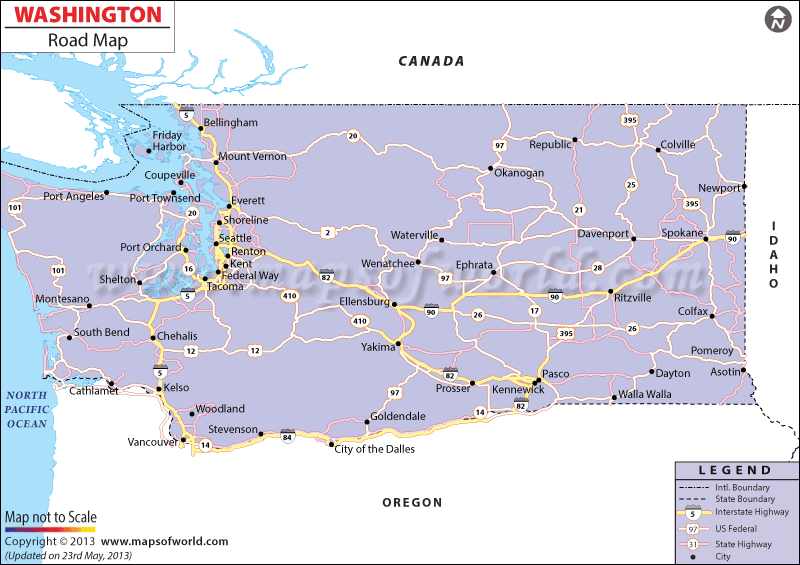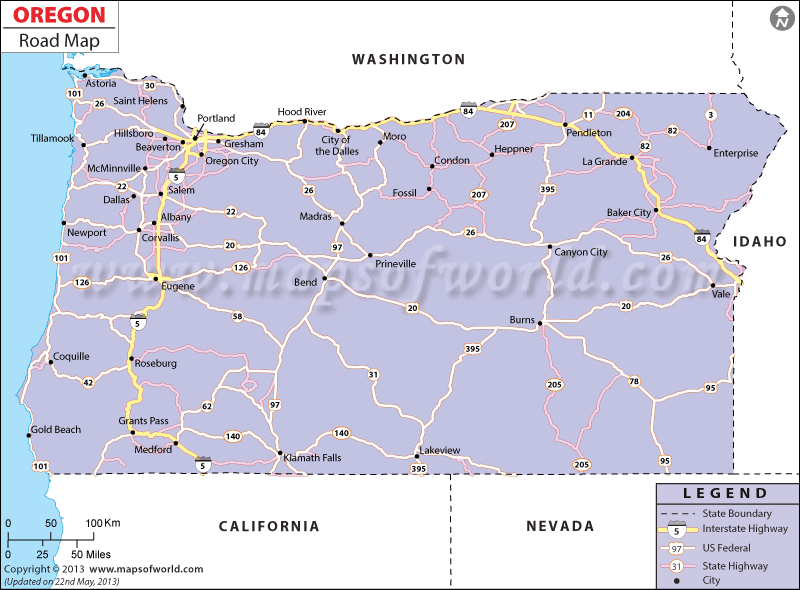Blue Highways: Vancouver, Washington
Unfolding the Map
 Vancouver, Washington lies across the Columbia River from Portland, Oregon. William Least Heat-Moon (LHM) indicates that, at least in the early 1980s, Vancouver hadn't kept up with Portland. This leads me to reflect on the plight of unappreciated sister cities that lie near better regarded metropolises. To see just how close (or far, depending on your perspective) Vancouver lies from Portland, click here for the map.
Vancouver, Washington lies across the Columbia River from Portland, Oregon. William Least Heat-Moon (LHM) indicates that, at least in the early 1980s, Vancouver hadn't kept up with Portland. This leads me to reflect on the plight of unappreciated sister cities that lie near better regarded metropolises. To see just how close (or far, depending on your perspective) Vancouver lies from Portland, click here for the map.
Book Quote
"I headed for Vancouver, Washington, once the Hudson's Bay Company's major outpost in the Northwest with lines of commerce reaching to Russian Alaska and Spanish California. In spite of a headstart, the old town had not been able to keep up with the new settlement across the river that got named by a coin toss."
Blue Highways: Part 6, Chapter 7
 Downtown Vancouver, Washington. Photo by Piyo at Wikimedia Commons. Click on photo to go to host page.
Downtown Vancouver, Washington. Photo by Piyo at Wikimedia Commons. Click on photo to go to host page.
Vancouver, Washington
How many cities have little brother or sister cities that get the short end of the stick, like Portland, Oregon and Vancouver, Washington? How many of them are often positioned to be great cities, and by an accident of fate get relegated to second status? How many of them were just doomed to be overshadowed regardless?
I hadn't really thought of this phenomena until I lived in Milwaukee and learned a bit about its history. Milwaukee has been considered to be a little sister to the great city of Chicago to its south. However, in the early lives of both cities, fate could have reversed making Milwaukee the greater of the two. A number of factors may have contributed to the preeminence of Chicago over Milwaukee, including the loss of most of Milwaukee's Irish political leaders in the Lady Elgin shipwreck disaster. However that may have happened, Milwaukee, sitting 90 minutes north of Chicago, is often overshadowed.
The Bay Area, south of where I grew up and where I went to school, has similar dynamics. There are three large cities on the San Francisco Bay: San Francisco, Oakland, and San Jose. In terms of population, San Jose is the biggest of the three. However, San Francisco has always been considered the preeminent city of the region. It even overshadows Sacramento, just two hours north and bigger than San Francisco. Part of this is due to San Francisco's colorful history, culture and traditions. However, how frustrating it must be for the other cities to have their thunder stolen. Oakland achieves a level of parity with its own MLB baseball, NBA basketball and NFL football teams, Sacramento has an NBA basketball franchise, and San Jose has an NHL hockey franchise. But, San Francisco still reigns supreme in the public consciousness.
And so on around the United States. St. Louis and East St. Louis, New York City and the cities of New Jersey across the river. I even saw a little bit of this in Canada, when I went to the Kitchener-Waterloo area. The combined area has almost 500,000 people, but it is overshadowed by Toronto to its east. Sometimes you'll see a neighbor city achieve some parity, as for instance one goes to the Tampa-St. Petersburg area. But mostly, when such combinations occur, one city takes the more noted position.
I even note this in the state where I currently reside, New Mexico. Albuquerque is the largest city in the state with a population of 450,000 or so people. It has a number of attractions within it which make for a great and varied lifestyle. Albuquerque has some great theater including a world class theater festival (Revolutions International Theater Festival) each year, some good music and an amazing yearly global music festival (Globalquerque). Albuquerque has accomplished artists. It has good restaurants, and the Sandia Mountain Wilderness bumps up against it. Yet Albuquerque is frequently overshadowed in public estimation, except by people who live there, by Santa Fe, the state capital, 70 miles north. Santa Fe is smaller, and has a reputation as an arts city. Santa Fe is also very much more expensive than Albuquerque. Yet most people, when they come to vacation in New Mexico, fly into Albuquerque, rent a car, and pass through the city on the interstate to get to Santa Fe without staying to see what Albuquerque has to offer. So, Albuquerque is permanently seen as a lesser place, even though it is not.
So these types of dynamics that lead to a Portland preeminence, Vancouver second-class status are interesting. I often go to Tampa-St. Petersburg because my wife's parents live in Sarasota. While Tampa is the flash and glitz of the big city, I think that I prefer St. Petersburg with its quieter streets, interesting bars and restaurants, and more sedate lifestyle. I love San Francisco, but a visit to the East Bay yields its own rewards. Milwaukee was a perfect city size to live in, with a lot of wonderful things despite other problems. People who can't afford or don't want to afford New York live in New Jersey and live fine lives. So, I imagine that even though, as LHM says, Vancouver hadn't kept up with Portland (and remember, this was 30 years ago...I've seen writing that Vancouver has been revitalized), it has its own attractions and its own enticements. And, at the very least, such places exist to prop up the preeminent city's ego while giving the lesser cities something to complain about next door.
Oh, one other thing. LHM mentions the city that was named by a coin toss. He is speaking of Portland, which was named by a coin toss between two of its founders. One founder wanted to name it after his home city of Portland, Maine, while the other wanted to name it after his home city of Boston, Massachussetts. I guess it's obvious who won. Vancouver, by the way, was named in honor of sea captain George Vancouver (as was Vancouver, British Columbia), and was an early outpost of the Hudson's Bay Company, a British and then Canadian fur trading conglomerate that today is the oldest corporation in North America.
Musical Interlude
When it comes to sisterly relationships, it doesn't matter if they are humans or cities. One gets all the attention, the other seethes. One tortures smaller sister, the other plans older sister's demise. Rarely do they get along famously - but it happens. This is captured in the love-hate feelings that Juliana Hatfield put into her song My Sister.
If you want to know more about Vancouver
City of Vancouver: All About Vancouver
The Columbian (newspaper)
Fort Vancouver National Historic Site
Visit Vancouver USA
Washington State University, Vancouver
Wikipedia: Vancouver
Next up: Camas, Washington




 Wednesday, October 19, 2011 at 4:42PM
Wednesday, October 19, 2011 at 4:42PM








